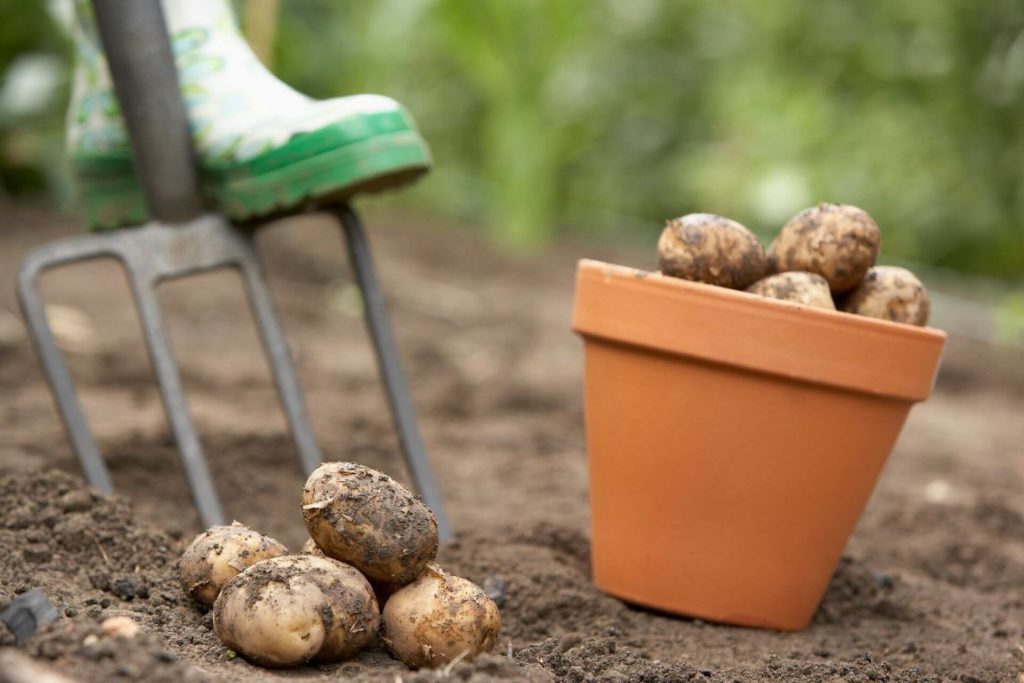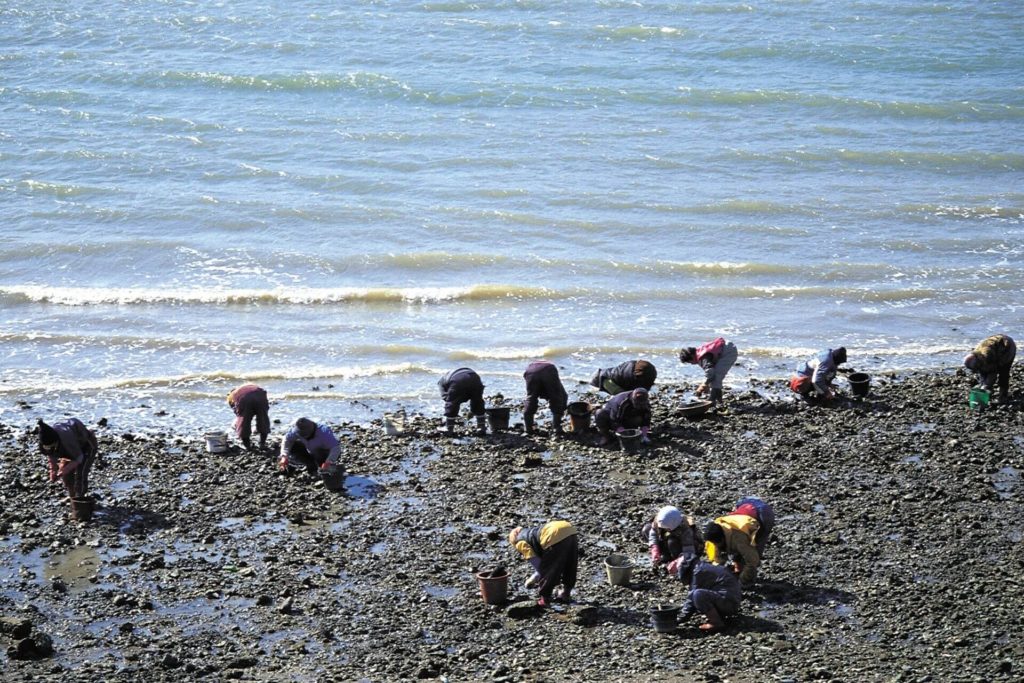「潮干狩り」は「dig up」?「dig for?」ー求めるニュアンスの「for」

管理者
「求めるニュアンス」は「for」
まず「up」はもちろん、「上に」を表します。
そのため「dig up」とすると、「掘り起こす」意味になります。
「dig up」のイメージ例文
He’s digging up some potatoes with a pitchfork.
(彼はピッチフォークでジャガイモを掘り起こしています)

そのため、潮干狩りも「dig up clams」でいいように思いますが、ニュアンス的には「for」になります(「clam」はハマグリ、アサリの意味)
なぜ、「for」になるかというと、貝はどこにあるか分からないから、です。
「for」のニュアンスは「追い求める」です。
「for」のニュアンス
She’s looking for her glasses.
(彼女はメガネを探しています)

有名な句動詞「look for …(…を探す)」ですね。この「for」は追い求める感じ。
潮干狩りも全く同じ感覚です。「貝を掘り求めている」わけなので、「dig for …(…を掘り求める)」で表現するわけです。
そのため、「宝探し」もよく「dig for …」で表現します。
「dig for …」の例文
He’s digging for buried treasure.
(彼は埋められた宝を掘り求めています)

「for」にすることで、場所が分からず、それを追い求めるニュアンスになります。
ちなみに上のジャガイモの例は、自分でその場所に埋めたわけなので、掘る場所が分かっています。また、何よりも、上に葉の部分が出ているので、どこにジャガイモがあるのかは一目瞭然です。
そのため、ただ単に「掘り起こせば(dig up)」いいわけです。
最後に二つのパターンの例文を紹介します。
- We dug up a time capsule in our backyard.
(私たちは裏庭のタイムカプセルを掘り起こした) - Roads have to be dug up to lay underground cables.
(地下ケーブルを敷くため、道路は掘り起こされなくてはならない) - Thieves are digging up corpses in order to steal jewelry and gold teeth.
(泥棒たちは宝石と金歯を盗むため、死体を掘り起こしている)
- He is digging for gold.
(彼は金を掘り求めている) - There were two fishermen on the beach digging for worms.
(二人の漁師が海岸で餌用ミミズを掘り求めている) - They dug for shellfish at low tide.
(彼らは浅瀬で貝殻を掘り求めている)
以上、「dig up」と「dig for」の違いについて、でした。
ABOUT ME






